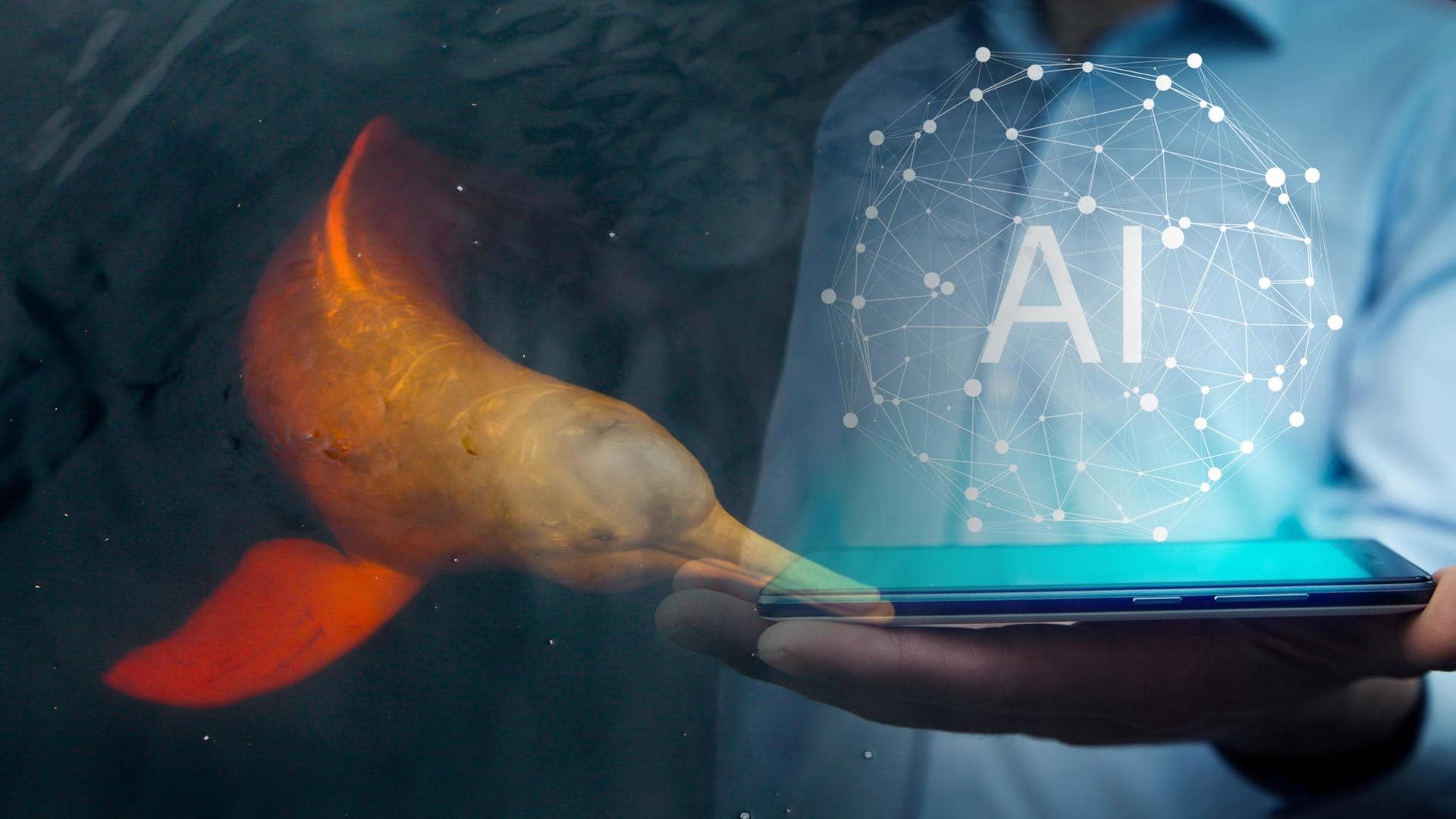
Scientists use artificial intelligence to protect endangered dolphins
What's the story
Researchers from the Catalonia Technical University and the Mamiraua Sustainable Development Institute are using artificial intelligence (AI) to monitor the movements of two endangered dolphin species in the Amazon River. The study focused on detecting and analyzing the unique sounds produced by the dolphins. Their findings, published in Nature's Scientific Reports, have the potential to significantly improve conservation efforts for these species.
Tracking movement
The objective was to track dolphin movements
To monitor the movements of the boto, also known as the pink river dolphin, and the tucuxi researchers needed a non-invasive method. Since traditional tracking methods like GPS tags, boats, or aerial drones were not suitable for these elusive creatures, they chose a non-invasive approach. They listened to the dolphins' sounds and used AI to differentiate them from the background noises.
Data collection
Collecting dolphin sounds with AI
The researchers set up underwater microphones at several locations within the Mamiraua reserve in northern Brazil. These microphones captured the unique sounds produced by the dolphins, including their echolocation clicks and communication whistles. The collected data was then analyzed using an AI system—a deep-learning neural network, similar to the human brain's pattern recognition ability. This technology distinguished dolphin sounds from background noises.
Training AI
Training AI to distinguish dolphin sounds
The AI system was programmed to categorize three main types of sounds: dolphin clicks, rainfall, and boat engines. Since both dolphin species use echolocation clicks extensively to navigate and communicate with each other through whistling, these distinctive sounds were important for the study. Furthermore, the neural network was taught to differentiate between the clicks and whistles of botos and tucuxis.
Analyzing
Analyzing dolphin movements
With the AI's ability to classify and distinguish dolphin sounds from the background noise of the Amazon River, researchers could track the movements of these endangered species in real time. This provided valuable insights into their behavior and habitat usage in the rainforest. The region is susceptible to periodic flooding during the rainy season, further emphasizing the urgency of understanding the dolphins' dynamics.
Importance
Dolphins' population decreases by half every 9-10 years
The study's findings are important for protecting the tucuxi and boto dolphins in the Amazon River. The research revealed that the boto population decreases by 50% every ten years, and the tucuxi population decreases by the same amount every nine years, which is worrying. Understanding where and when the dolphins go will help us protect them and encourage harmonious coexistence with local communities.
Information
Future prospects
Looking ahead, the research team plans to improve the AI system to track other water creatures. Furthermore, AI could potentially help in studying marine life in the vast oceans, where noise pollution and human disturbances continue to pose threats to various marine species.